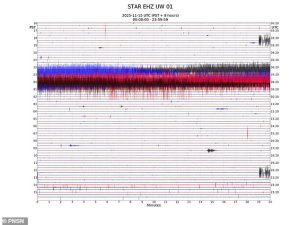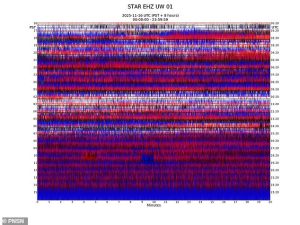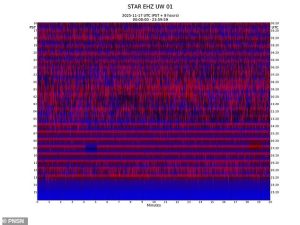Key Takeaways
- Mount Rainier experiencing unprecedented 72-hour volcanic tremor
- Constant seismic activity detected across volcano’s western flank
- No immediate eruption threat, but USGS maintains ‘Very High’ risk rating
- Primary danger would be lahars – fast-moving mudflows threatening millions
Mount Rainier, one of America’s most dangerous volcanoes, has entered an unprecedented phase of continuous seismic activity lasting 72 hours, raising concerns among geologists monitoring the Pacific Northwest. The mountain towers over major population centers including Seattle, Tacoma, and Portland, putting millions at potential risk.
Unprecedented Seismic Activity
The Pacific Northwest Seismic Network detected nearly nonstop, high-energy seismic signals across Mount Rainier’s west flank beginning Saturday. Unlike typical earthquake patterns, this activity represents a volcanic tremor – a continuous hum caused by magma, hot water, and gas movement beneath the surface.
Seismometers registered a sharp spike around 5am ET on November 15, with vibrations intensifying throughout the day. The seismic readings showed increasingly fuzzy lines that eventually formed thick black bands indicating constant activity.
By Monday, instruments recorded overlapping vibrations for 80-90% of the day, creating an almost solid black line of activity. While no immediate eruption warning signs have emerged, this represents one of the longest volcanic tremor episodes at Rainier in recent years.
The Lahar Threat
When Mount Rainier eventually erupts, the primary danger won’t be lava or ash clouds but lahars – violent, fast-moving mudflows capable of destroying entire communities within minutes. The US Geological Survey warns that large lahars can crush, bury, or carry away almost anything in their path.
The 1980 Mount Saint Helens eruption, located just 50 miles from Rainier, demonstrated this threat when a lahar destroyed over 200 homes, 185 miles of roads, and contributed to 57 deaths.
Historical Context and Current Status
This tremor activity follows July’s record-breaking seismic swarm where over 1,000 earthquakes rocked the mountain over three weeks – the largest ever recorded at Rainier and far exceeding the 2009 swarm that produced only 120 minor quakes over three days.
Despite the current activity, USGS has not raised the threat level as none of the critical eruption precursors have appeared. However, the agency maintains Mount Rainier’s overall eruption risk as ‘Very High,’ with scientists closely monitoring for any escalation in tremor severity, earthquake activity, or ground swelling.








